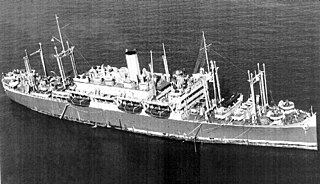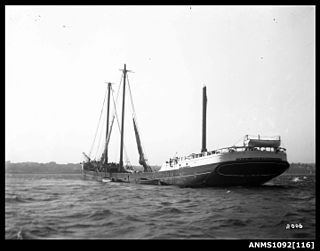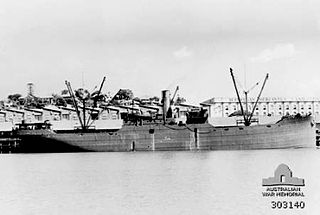History
In 1850 the ship brokerage firm of Hughes and Hunter was established in San Francisco. In 1865 it became Hughes & McDaniel and, in 1871, Hughes, McDaniel and Edson. In 1873 McDaniel dropped out, in 1879 Hughes dropped out. The company continued as C. A. Edson & Co. Robert H. Swayne and John C. Hoyt, former employees, took over business in 1887. [1]
Swayne & Hoyt was engaged in trade with Japan by 1896, when the company was recorded as protesting duties assessed on ceramic goods it had imported in February 1896. [2]
Swayne & Hoyt was incorporated in August 1896 as a warehouse, commission and mercantile business in the state of California with principle area of business in San Francisco, with a capital stock of $100,000 of which $25,000 had been actually subscribed. [3]
On February 27, 1897 the S&H warehouse was the scene of the "biggest opium seizure in California" ($200,000 of Chinese opium). [4]
In 1926, the company was operating the American-Australian-Orient Line which sailed to Australia, New Zealand, and Asian ports. [5] Also in the mid-1920s, Swayne & Hoyt was engaged in trade between Pacific ports and the east coast of South America. [6]
By the late 1930s, Swayne & Hoyt was engaged in intercoastal shipping between U.S. ports on the Gulf of Mexico and on ports on the Pacific coast via the Panama Canal. [7] Swayne & Hoyt v. United States challenged the legality of an order of the Secretary of Commerce to cease offering 6-month contracts to clients at a reduced rate if the clients only use the same shipping company for all their shipping during that period. The case was dismissed on the ground that Section 16 of the Shipping Act of 1916 forbids preferential treatment of any kind and that the arrangement violates unrestricted competition and furthers the establishment of a monopoly. The court conceded though that the arrangement had benefits to both the suing shipowners and their clients.
In June 1932, The Log, reported that Tirey L. Ford, Jr., Executive Vice-President of Swayne & Hoyt, Ltd., visited Puget Sound in connection with a proposed "rebuilding of the Swayne & Hoyt Gulf Pacific Mail Line ships Point Ancha and Ossining, which would operate under mail contract between Pacific Coast ports and ports of South America, the West Indies, and the Gulf." [8]
Robert H. Swayne died 8 August 1936. [9]
On February 26, 1940, the Pacific Shipper said that Tirey L. Ford, Vice President of Swayne & Hoyt, announced that the company would retire from business after 90 years leading steamship companies. [10]
The business closed officially on April 30, 1940, also the date of the last traditional annual company dinner party. Final employment figures were 500 seagoing personnel and 220 in the home and branch offices. [1]
"Swayne & Hoyt" mentioned in the California Digital Newspaper Collection (cdnc.ucr.edu)| 1890s | 1900s | 1910s | 1920s | 1930s | 1940s | 1950s |
|---|
| 16 | 87 | 393 | 2,331 | 1,480 | 102 | 1 |
Lines
Albion River Steamship Company
was incorporated May 31, 1902 by Robert H. Swayne, who also incorporated the Albion & Southeastern Railroad on May 8, 1902 and had bought on April 1, 1902 the Albion River Railroad from the Albion River Lumber Co. for $67,500. The goal was a transport service from Bonneville to Albion and from thereon by ship to San Francisco. [57]
Pacific Argentine Brazil Line (1920-)
Established in 1920, first announced in May, to be on a monthly schedule, through the Magellan Strait and return through the Panama Canal or this route in reverse. Initially four newly launched ships, the Pallas and Rotarian by Todd Tacoma, the West Notus and West Norranus by Southwestern Shipbuilding in San Pedro, all owned by the USSB, all going on their maiden voyage for the Line. [58] [59] [60]
Seattle - San Francisco - San Pedro - Magellan Strait - Buenos Aires - Montevideo - Santos - Panama Canal - San Pedro - San Francisco - Seattle
Swayne & Hoyt was classified as a Class 8 manager and/or operator (25,000 to 49,999 dwt) by the USSB in 1920, with 32,600dwt (2 * 7,500 + 2 * 8,800 = 32,600). Barber SS Lines was the largest at that time, Class No. 2 with 344,187dwt and there was a total of 42 Class 8 operators managing 1,437,336dwt worth of USSB-owned ships. [61]
| Ship | Departs SF | Arr. Buenos Aires | P.Canal A->P | P.Canal P->A |
|---|
| Pallas | 27 Jun 20 [62] | | 25 Sep [63] |
| West Norranus | 10 Jul 20 [64] |
| West Notus | 29 Jul 20 [65] | 23 Sep [66] |
| Rotarian | 8 Aug 20 [67] | 22 Sep (Rosario) [68] | 22 Nov [69] |
| Pallas | | | | 24 Nov 20 |
| West Notus | | | 10 Jan 21 |
| Rotarian | | | 7 Apr 21 |
| West Notus | | | 2 May 21 |
| Rotarian | | | 16 Jun 21 |
| Pallas | | | 29 Jul 21 |
| West Notus | | | 30 Sep 21 |
| Pallas | | | 24 Oct 21 |
| Rotarian | | | | 18 Nov 21 |
| West Notus | | | 18 Dec 21 |
| West Katan | | | | 12 Jan 22 |
| Rotarian | | | 9 Feb 22 |
| West Notus | | | | 17 Feb 22 |
| West Katan | | | 18 Apr 22 |
| West Notus | | | 9 May 22 |
| West Gambo | | | 16 Jun 22 |
At the end of 1922 the composition of the ships was changed, three combined Passenger / Cargo liners with refrigerated cargo holds were allocated by the USSB: President Hayes, President Harrison and Susquehanna, [70] which were to operate alongside 2 cargo ships. [71]
Pacific Caribbean Gulf Line (1920-1926)
Establishment of the line was first announced on July 13, 1920 by Charles Brown of S&H. First ship was to be the Eldorado sailing from New Orleans in August, followed by the Alvarado in September. [72] The Iris was added to serve the route on September 11, after finishing repairs in Long Beach. [73]
The Colombian ports of Cartagena and Barranquilla were also served on a regular basis, Cuba and other West Indian ports were considered opportunities from the start, if the business conditions allowed. Round-trip time was on the order of two and a half months. [74]
A perennial advertisement in Traffic World started appearing in August 1920, listing (updated) approximate departure dates of named ships. The J.H.W. Steele Company (630 Common Street, New Orleans, La.) acted as agents in Gulf ports. [75]
The Alvarado was delayed due to lack of freight. The New Orleans Chamber of Commerce was urging shippers to make use of the new service. [76] Alvarado departed New Orleans on October 13 for Cartagena [77] and crossed the Panama Canal on October 28. [78] Swayne & Hoyt announced in November that despite rumors the new service would be made permanent. [79]
| Ship | From | 1920 | To | | From | 1920 | To |
|---|
| Iris | San Francisco | 8 Nov | New York | | New Orleans | 30 Dec | San Francisco |
| Alvarado | San Francisco | 13 Dec | Habana | | New Orleans | 24 Jan | San Francisco |
| Ship | From | 1921 | To | | From | 1921 | To |
|---|
| Eastern Sword | Seattle | 29 Jan | New Orleans |
| Eldorado | San Francisco | 6 Feb | New Orleans | | New Orleans | 16 Mar | Los Angeles |
| Lake Gunni | | | | | New Orleans | 6 May | Los Angeles |
| Alvarado | Seattle | 24 Mar | Porto Rico | | New Orleans | 24 May | San Francisco |
| Eldorado | Aberdeen | 19 May | New Orleans | | New Orleans | 4 Jul | Los Angeles |
| Lake Hector | | | | | New Orleans | 16 Aug | Seattle |
| Iris | San Francisco | 19 Aug | New Orleans | | New Orleans | 22 Sep | San Francisco |
| Eldorado | San Francisco | 31 Aug | New Orleans | | New Orleans | 23 Oct | Seattle |
| Lake Hector | Anacortes | 7 Oct | New Orleans |
| Alvarado | San Francisco | 20 Oct | Vera Cruz | | New Orleans | 28 Nov | San Francisco |
| Ship | From | 1922 | To | | From | 1922 | To |
|---|
| Eldorado | San Francisco | 26 Dec | New Orleans | | New Orleans | 5 Feb | San Francisco |
| Eldorado | San Francisco | 2 Apr | New Orleans | | New Orleans | 21 May | Seattle |
Gulf Pacific Line (1926-)
The successor to the Pacific-Caribbean-Gulf Line, effective September 1, 1926. [80]
Effective November 1, 1930 the Redwood Line with 6 ships and the Gulf-Pacific Line with 7 ships merged with stocks on ships exchanged on a tonnage basis. Gulf Pacific was operating 9 ships (presumably this refers to the Point San Pablo and Point San Pedro) at the time on the line. The transfer was applied to ships sailing from Puget Sound, after November 1. [81]
Final roundtrips of the Redwood Line (Panama Canal Records)| Name | From | 1930 | To | | From | 1930 | To |
|---|
| Dio | Seattle | 11 Jul | New Orleans | | New Orleans | 8 Aug | Tacoma |
| Sabotawan | Seattle | 16 Jul | Mobile | | Houston | 17 Aug | Seattle |
| Dochet | Portland | 29 July | New Orleans | | New Orleans | 30 Aug | Tacoma |
| Delight | Seattle | 16 Aug | New Orleans | | Houston | 13 Sep | Los Angeles |
| Manhattan Island | Portland | 27 Aug | New Orleans | | New Orleans | 29 Sep | Seattle |
| Abron | Longview, Wa. | 14 Sep | Mobile | | Houston | 12 Oct | Tacoma |
| Dio | Seattle | 27 Sep | Mobile | | Houston | 2 Nov | Seattle |
| Sabotawan | Seattle | 5 Oct | New Orleans | | New Orleans | 16 Nov | Seattle |
| Delight | Eureka | 26 Oct | Mobile | | Lake Charles | 1 Dec | Tacoma |
| Dochet | Seattle | 2 Nov | New Orleans | | Houston | 13 Dec | Seattle |
| M. Island | Seattle | 23 Nov | New Orleans | | Houston | 2 Jan | Seattle |
Gulf Pacific Line (Panama Canal Records)| Name | From | 1930 | To | | From | 1930 | To |
|---|
| Point San Pablo | Portland | 25 Jun | New Orleans | | New Orleans | 2 Aug | Seattle |
| Point Fermin | Seattle | 12 Jul | New Orleans | | Corpus Christi | 16 Aug | San Francisco |
| Point Montara | Vancouver, B.C. | 22 Jul | New Orleans | | Tampa | 2 Sep | Vancouver, B.C. |
| Point Sur | Portland | 2 Aug | New Orleans | | New Orleans | 14 Sep | San Francisco |
| Point Arena | San Francisco | 16 Aug | New Orleans | | New Orleans | 28 Sep | San Francisco |
| Point Reyes | Portland | 3 Sep | New Orleans | | Corpus Christi | 12 Oct | Vancouver, B.C. |
| Point Gorda | Seattle | 10 Sep | New Orleans | | Corpus Christi | 25 Oct | Seattle |
| Point San Pablo | Vancouver, B.C. | 28 Sep | New Orleans | | New Orleans | 8 Nov | Vancouver, B.C. |
| Point Fermin | Portland | 10 Oct | New Orleans | | Corpus Christi | 22 Nov | Seattle |
| Point Montara | Portland | 30 Oct | New Orleans | | Tampa | 6 Dec | Seattle |
| Point Sur | San Francisco | 8 Nov | New Orleans | | Corpus Christi | 20 Dec | Tacoma |
| Name | From | 1930 | To | | From | 1931 | To |
|---|
| Point Arena | Portland | 25 Nov | New Orleans | | Corpus Christi | 6 Jan | Seattle |
| Point Reyes | Portland | 8 Dec | New Orleans | | Houston | 23 Jan | Vancouver |
| Abron | Seattle | 14 Dec | New Orleans | | Houston | 15 Jan | Seattle |
| Point Gorda | Portland | 22 Dec | New Orleans | | Corpus Christi | 9 Feb | Seattle |
| Dio | Seattle | 31 Dec | New Orleans | | New Orleans | 1 Feb | Seattle |
| Name | From | 1931 | To | | From | 1931 | To |
|---|
| Point Bonita | Vancouver, B.C. | 13 Jan | New Orleans | | Corpus Christi | 26 Feb | Seattle |
| Point Fermin | Seattle | 16 Jan | New Orleans |
| Delight | Seattle | 24 Jan | New Orleans | | New Orleans | 21 Feb | Seattle |
| Dochet | Puget Sound | 5 Feb | Mobile | | Houston | 12 Mar | Vancouver, B.C. |
| Point Montara | Portland | 5 Feb | New Orleans | | Tampa | 15 Mar | Seattle |
The Point Ancha, sailing September 20, 1932 marked the beginning of a new passenger and freight service between Pacific Coast ports and Baranquillo, Kingston, Tampico (definite), Cartagena, Curacao (Dutch West Indies), Vera Cruz, Port au Prince and Manzanillo (probable). [82]
Water Carrier Agreements
Agreements approved by the Department of Commerce or the Shipping Board (SB).
| No. | Est. | Cancel | With | Cargo | Type | A | B | trans | Notes |
|---|
| | Sep 33 | Christenson-Hammond Line, McCormick SS Co, Nelson SS Co | canned fish | from-to | San Diego | Gulf | Los Angeles | [83] |
| 532-C | | Apr 34 | National Navigation Lines | inedible tallow | from-to | Gulf | Guaymas | San Francisco | [84] |
| 656-1-C | | Oct 33 | Erikson Nav Co | | from-to | Gulf | Mare Island Navy Yard | San Francisco | [85] |
| 673-C | | Apr 34 | National Navigation Lines | general | between | Gulf | west coast of Mexico | San Francisco | [84] |
| 681-C | | Apr 34 | National Navigation Lines | crinkled paper bag liners | from-to | Gulf | Mazatlan, Topologampo | San Francisco | [84] |
| 921-2-C | | Oct 33 | McCormick SS Co, Nelson SS Co, Pacific SS Lines | | from-to | Gulf | Portland, Astoria, Seattle, Tacoma | San Francisco | [86] |
| 1426-1-C, 1856-C | | Oct 33 | Los Angeles SS Co | canned fish | from-to | San Diego | Gulf | Los Angeles | [86] |
| 1506-C | | Oct 33 | Oceanic and Oriental Nav Co | | from-to | Gulf | Orient | San Francisco | GP [86] |
| 1507-C | | Oct 33 | Blue Funnel Line, Osaka Shosen Kaisha, States SS Co, Tacoma Oriental SS Co | | from-to | Gulf | Orient | Los Angeles, San Francisco,, Portland, Tacoma, Seattle | [85] |
| 1668-C | | Oct 33 | Christenson-Hammond Line | | from-to | Gulf | Hoquiam, Aberdeen | San Francisco | [85] |
| Aug 31 | | Tampa Interocean SS Co | cork | from-to | Spain | Pacific | New Orleans | SB [87] |
| 2440 | Sep 33 | | Oceanic SS Co., Oceanic and Oriental Nav. Co. | | from-to | Australia, New Zealand | Gulf | Los Angeles, San Francisco | [88] |
| 2468 | Sep 33 | | Dollar SS Lines | | from-to | Philippines, China, Japan | Gulf | Los Angeles, San Francisco | [89] |
| 2464, 2465 | Sep 33 | | Kawasaki Kisen Kaisha | | from-to | China, Japan | Gulf | Seattle | [90] |
| 2545 | Oct 33 | | Sacramento Nav Co, California Nav Co | | from-to | Gulf | Sacramento, Stockton | San Francisco | [91] |
| 2625 | Feb 34 | | California SS Co, Los Angeles SS Co , McCormick SS Co, Pacific Steamship Lines Ltd | general | between | San Diego | Gulf | Los Angeles | [92] |
| 2718 | Mar 34 | | Kawasaki Kisen Kubushiki Kaisha | general | from-to | China, Japan | Gulf | Seattle, San Francisco, Los Angeles | [93] |
| 2583 | Mar 34 | | Wilh. Wilhelmsen, Aktiebolaget Svenska Amerika Mexiko Linien | coffee | from-to | Vera Cruz | Pacific | New Orleans | [94] |
| 2984 | May 34 | | Matson Navigation Co, Oceanic SS Co, Los Angeles SS Co | general | between | Gulf | Hawaii | San Francisco, Los Angeles | [95] |
| 3658 | Dec 34 | | Lykes SS Co | canned grapefruit, canned pineapple, coconuts | from-to | Puerto Rico | Pacific | Houston, Galveston, Beaumont, Lake Charles | [96] |













